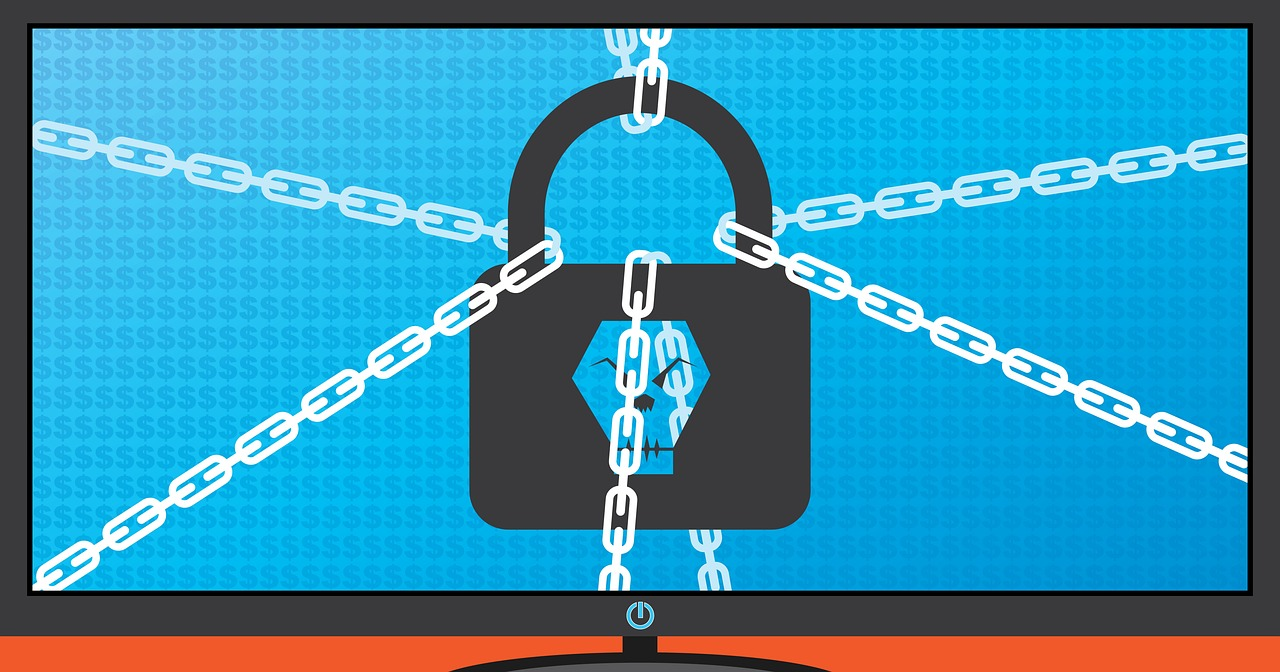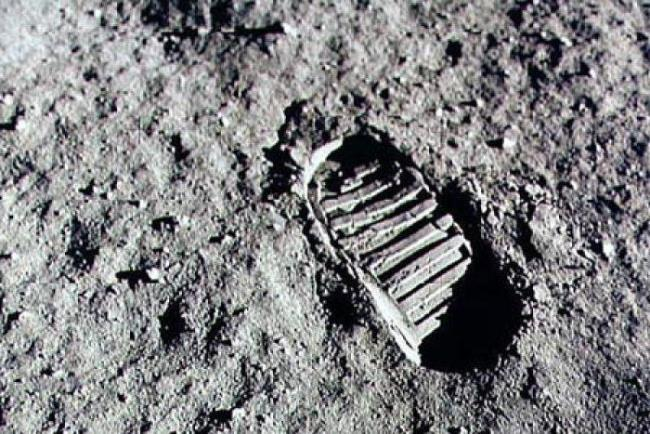| Previous
Page |
PCLinuxOS
Magazine |
PCLinuxOS |
Article List |
Disclaimer |
Next Page |
ICYMI: UK Moves Forward Wtih Ban From Paying Ransomware Attackers |
|
by Paul Arnote (parnote)
 NASA New observations from the James Webb Space Telescope (JWST) are painting a new picture of Jupiter's moon Europa and revealing the hidden chemistry of the icy moon's interior, according to an article from Space.com. For decades, scientists pictured Europa's frozen surface as a still, silent shell. But the new observations reveal that it's actually a dynamic world that's far from frozen in time. “We think that the surface is fairly porous and warm enough in some areas to allow the ice to recrystallize rapidly,” Richard Cartwright, a spectroscopist at Johns Hopkins University's Applied Physics Laboratory and lead author of the new study, said in a statement. Perhaps even more exciting is what this surface activity reveals about Europa's subsurface ocean. The presence of geologic activity and ongoing cycling between the subsurface and surface make “chaos terrains” — highly disrupted regions where blocks of ice seem to have broken off, drifted and refrozen — especially valuable as potential windows into Europa's interior. Ancient Egyptians sure knew how to stage a burial, including canopic jars to hold organs and scrolls from the “Book of the Dead” to help the deceased navigate the afterlife. In central Egypt, archaeologists uncovered one of these elaborate scenes: a 3,500-year-old New Kingdom cemetery filled with mummies, amulets, statues, canopic jars, and a 43-foot-long papyrus scroll containing part of the Book of the Dead, according to an article from Popular Mechanics. This scroll is the first complete papyrus found in the Al-Ghuraifa area, and is “characterized by being in good condition,” Mustafa Waziri, secretary general of the Egyptian Supreme Council of Antiquities, said in a translated Arabic statement from the Ministry of Tourism and Antiquities. Found in everything from protein bars to energy drinks, erythritol has long been considered a safe alternative to sugar. But new research suggests this widely used sweetener may be quietly undermining one of the body's most crucial protective barriers – with potentially serious consequences for heart health and stroke risk, according to an article from ScienceAlert. A recent study from the University of Colorado suggests erythritol may damage cells in the blood-brain barrier, the brain's security system that keeps out harmful substances while letting in nutrients. The findings add troubling new detail to previous observational studies that have linked erythritol consumption to increased rates of heart attack and stroke. In the new study, researchers exposed blood-brain barrier cells to levels of erythritol typically found after drinking a soft drink sweetened with the compound. They saw a chain reaction of cell damage that could make the brain more vulnerable to blood clots – a leading cause of stroke.  Image by Katie White from Pixabay The United Kingdom will move forward with its plan to ban all public sector bodies and critical national infrastructure from paying ransomware attackers, according to an article from TechRepublic. The intention is to make critical industries “unattractive targets for criminals” to reduce the frequency and impact of incidents in the country. The ban, which would apply to NHS trusts, schools, local councils, and data centres, was first proposed in January. It then underwent several months of public consultation, culminating this week in an announcement that nearly three-quarters of respondents supported the proposal. Astronomers have discovered a brand-new world hiding out beyond Pluto, according to an article from BGR.com. While exciting, the discovery of this new world could challenge long-standing theories of the existence of Planet Nine. In fact, the discovery could even kill those theories completely. The idea that a ninth planet exists in our solar system isn't a new one by any means. In fact, scientists have been theorizing about it since we officially marked Pluto off the planetary lineup (possibly even before, but back then it was called Planet X, instead). However, finding evidence of a ninth planet has been difficult. Not only because of how far away it might be — in the outer reaches of our solar system — but also just because it doesn't always line up with the science we have in front of us. Proving that Planet Nine exists shouldn't be this difficult. But space is vast. Thankfully, researchers say they might have found the key to proving Planet Nine's existence. Further, some scientists even did the math and estimated that there was at least a 40% chance that Planet Nine exists. Four major U.S. agencies have issued a joint cybersecurity alert warning about the escalating threat posed by the Interlock ransomware operation, which has increasingly targeted businesses, healthcare providers, and critical infrastructure entities across North America and Europe, according to an article from TechRepublic. The Federal Bureau of Investigation (FBI), Cybersecurity and Infrastructure Security Agency (CISA), Department of Health and Human Services (HHS), and the Multi-State Information Sharing and Analysis Center (MS-ISAC) released the alert Tuesday as part of the #StopRansomware initiative. The agencies emphasized Interlock’s rapid evolution and its focus on high-impact sectors, particularly healthcare. According to the advisory, Interlock emerged in September 2024 and has since launched financially motivated ransomware campaigns. The group employs a double-extortion model that involves both encrypting the victim’s system and stealing data, threatening to publish the stolen files if a ransom is not paid. The gang does not include ransom demands in its initial notes. Instead, victims are given a unique code and directed to a .onion URL on the Tor network, where ransom negotiations take place.  Image by Steve Buissinne from Pixabay Stevia may provide more benefits than as a zero-calorie sugar substitute, according to an article from Science Daily. When fermented with bacteria isolated from banana leaves, stevia extract kills off pancreatic cancer cells but doesn't harm healthy kidney cells, according to a research team at Hiroshima University. The researchers published their findings in the International Journal of Molecular Sciences. “Globally, the incidence and mortality rates of pancreatic cancer continue to rise, with a five-year survival rate of less than 10%,” said co-author Narandalai Danshiitsoodol, associate professor in Department of Probiotic Science for Preventive Medicine, Graduate School of Biomedical and Health Sciences. “Pancreatic cancer is highly invasive and prone to metastasis, showing significant resistance to existing treatments, such as surgery, radiotherapy, and chemotherapy. As such, there is an urgent need to identify new and effective anticancer compounds, particularly those derived from medicinal plants.” Prior studies by other researchers indicated that stevia leaf extract demonstrated potential as an anticancer drug, but isolating and applying the specific bioactive components that protect against cancer cells has remained challenging, Danshiitsoodol said. However, fermenting with bacteria can structurally change the extract and produce bioactive metabolites, which are compounds that can impact living organisms. The most commonly taken analgesic worldwide – and one of the most consumed drugs in the US – could be doing a lot more than just pain relief, according to an article from ScienceAlert. Acetaminophen, also known as paracetamol and sold widely under the brand names Tylenol and Panadol, may also increase risk-taking, according to research from 2020 that measured changes in people's behavior when under the influence of the medication. “Acetaminophen seems to make people feel less negative emotion when they consider risky activities – they just don't feel as scared,” explained neuroscientist Baldwin Way from The Ohio State University when the findings were published. “With nearly 25 percent of the population in the US taking acetaminophen each week, reduced risk perceptions and increased risk-taking could have important effects on society.” Imagine this. A hacker frantically types code into a (punk sticker-laden, if the movies are accurate) laptop, trying to get around the active firewall that stands between them and access to the organization’s information, according to an article from CD Insights. It’s burdensome work. There’s sweat and a certain amount of genius involved. And really, if that were an accurate picture of the threat landscape, we might have a better idea of how to stop breaches from happening. Unfortunately, a growing number of incidents are happening because the hacker just…gained access through credential-based attacks. How does this happen? It starts with something called infostealer malware, which is small, fast, and widely available. These programs quietly infiltrate personal or enterprise devices and harvest login credentials, browser cookies, and authentication tokens. Once captured, those credentials are sold or traded on dark web marketplaces. Some go for pennies. Others, if they offer access to high-value enterprise tools like Okta, Salesforce, or Microsoft 365, can fetch hundreds or even thousands of dollars. And attackers are buying. According to the recent 2025 M-Trends report from Mandiant and Google Cloud, stolen credentials have now overtaken phishing as the second most common method of initial access in breaches, and this is a significant nugget for understanding how the threat landscape is shifting. The top spot still belongs to known vulnerabilities and exploits, but the credential economy is closing the gap. Why? Because it works. And because too many organizations still treat identity protection as a checkbox, not a control surface.  Image by Andreas from Pixabay Researchers have discovered that the active compound in psychedelic mushrooms can extend lifespan and reduce cellular aging by 50% in human cells and 30% in elderly mice, according to an article from the GoodNewsNetwork. The experiments reveal another potential therapeutic use of the compound — called psilocybin — which has already been studied as a treatment for a myriad of other conditions. The team from Emory University are calling it the first ever long-term study evaluating the systemic effects of psilocybin in aged mice. The animals were the equivalent of 60 to 65 in biological human years, and exhibited hair loss and greying, as well as reduced physical activity. The mice were dosed with psilocin, the active ingredient in psilocybin that appears once the latter is broken down during digestion. The mice received a low level at first, and eventually a higher dose of 15 milligrams once a month for 10 months. Within the first 3 months, the mice receiving psilocybin exhibited signs of youth, including fewer instances of greying and hair loss—including a reversal of these symptoms — and a general improvement in physical activity. By trial’s end, the mice that received psilocybin had a 30% increased lifespan on average compared to the control group. Scattered Spider is the somewhat too cutesy name applied to one of the most dangerous threats facing organizations today, according to an article from Forbes. The ransomware threat actors behind devastating attacks on retail and aviation targets, among others, show no signs of going away. The Federal Bureau of Investigation and the Cybersecurity and Infrastructure Security Agency have now updated a joint cybersecurity advisory with a critical new warning: don’t reset your passwords. Here’s what you need to know about the latest FBI warning and the ongoing Scattered Spider threat. The July 29 update to the FBI and CISA cybersecurity advisory, alert code AA23-320A, warns that Scattered Spider has “posed as employees to convince IT and/or helpdesk staff to provide sensitive information, reset the employee’s password, and transfer the employee’s MFA to a device they control on separate devices.” Breast cancer patients who have been in remission for years or even decades may still need to be cautious about respiratory infections, according to an article from ScienceAlert. Some common viruses may re-awaken a very small number of dormant breast cancer cells within our lungs, according to emerging research. “Dormant cancer cells are like the embers left in an abandoned campfire, and respiratory viruses are like a strong wind that reignites the flames,” argues molecular geneticist James DeGregori from the University of Colorado. The research began following the COVID-19 pandemic, when DeGregori and his colleagues began to notice a curious uptick in cancer cases. To find out more, the international team turned to human population studies and mouse models. They found that patients in remission for cancer in the UK Biobank who tested positive for SARS-CoV-2 later showed a twofold increase in cancer-related death.  When a multimillion-dollar extraterrestrial vehicle gets stuck in soft sand or gravel -- as did the Mars rover Spirit in 2009 -- Earth-based engineers take over like a virtual tow truck, issuing a series of commands that move its wheels or reverse its course in a delicate, time-consuming effort to free it and continue its exploratory mission. While Spirit remained permanently stuck, in the future, better terrain testing right here on terra firma could help avert these celestial crises, according to an article from Science Daily. Using computer simulations, University of Wisconsin-Madison mechanical engineers have uncovered a flaw in how rovers are tested on Earth. That error leads to overly optimistic conclusions about how rovers will behave once they're deployed on extraterrestrial missions. An important element in preparing for these missions is an accurate understanding of how a rover will traverse extraterrestrial surfaces in low gravity to prevent it from getting stuck in soft terrain or rocky areas. On the moon, the gravitational pull is six times weaker than on Earth. For decades, researchers testing rovers have accounted for that difference in gravity by creating a prototype that is a sixth of the mass of the actual rover. They test these lightweight rovers in deserts, observing how it moves across sand to gain insights into how it would perform on the moon. It turns out, however, that this standard testing approach overlooked a seemingly inconsequential detail: the pull of Earth's gravity on the desert sand. Through simulation, Dan Negrut, a professor of mechanical engineering at UW-Madison, and his collaborators determined that Earth's gravity pulls down on sand much more strongly than the gravity on Mars or the moon does. On Earth, sand is more rigid and supportive — reducing the likelihood it will shift under a vehicle's wheels. But the moon's surface is “fluffier” and therefore shifts more easily — meaning rovers have less traction, which can hinder their mobility. New research from Edith Cowan University has found that just one session of exercise, either resistance or high-intensity interval training, can trigger anti-cancer effects in breast cancer survivors, according to an article from SciTechDaily. New findings from Edith Cowan University (ECU) suggest that just one session of resistance training or high-intensity interval training (HIIT) may support the body’s ability to fight cancer. PhD researcher Francesco Bettariga discovered that a single workout can boost the production of myokines—proteins released by muscles during exercise that are known to have anti-cancer properties. His data showed that these proteins could potentially slow cancer cell growth by 20-30%. A virus normally found in black-eyed peas is emerging as a powerful ally in the fight against cancer, according to an article from SciTechDaily. Scientists discovered that this plant virus, called CPMV, doesn’t infect human cells—but it does trigger a potent immune response, training the body to recognize and destroy cancer cells. Unlike typical therapies, it primes both innate and adaptive immunity, offering long-term protection. A virus known for infecting black-eyed peas is now emerging as a surprisingly powerful tool in cancer treatment, and scientists are beginning to understand why. Researchers from the University of California San Diego, led by a team of chemical and nano engineers, recently published a study in Cell Biomaterials that dives into how the cowpea mosaic virus (CPMV) stimulates the human immune system in a way that other plant viruses do not. Unlike its viral relatives, CPMV appears to uniquely trigger immune cells to recognize and fight cancer.  ESA/Hubble, M. Kornmesser The saga surrounding Neptune-size “super-Earth” exoplanet K2-18 b just got a whole lot more interesting, according to an article from Space.com. For a quick recap, this is the world a team of scientists recently suggested could host life — to the dismay of other scientists in the community, who felt the announcement failed to include necessary caution. While signs of life on the world have failed to conclusively present themselves to the James Webb Space Telescope (JWST), the powerful space telescope has discovered that this planet is so rich in liquid water that it could be an ocean, or “Hycean” world. “This has certainly increased the chances of habitability on K2-18 b” Nikku Madhusudhan, the University of Cambridge scientist behind the original K2-18b discovery as well as the new study, told Space.com. “This is a very important development and further increases the chance of a Hycean environment in K2-18 b. It confirms K2-18 b to be our best chance to study a potential habitable environment beyond the solar system at the present time.” Zealandia had so much promise as the eighth continent on Earth. Well, it did — until about 95 percent of the mass sunk under the ocean, according to an article from Yahoo! News. While the majority of Zealandia may never host inhabitants—at least, not land-based ones—the would-be continent is now no longer simply lost. Researchers have finished mapping out the northern two-thirds of Zealandia, wrapping up the documentation of the nearly two million square miles of the submerged land mass. In a study published in Tectonics, researchers from GNS Science of New Zealand document their process of dredging rock samples from the Fairway Ridge to the Coral Sea in order to analyze the rock geochemistry and understand the underwater makeup of Zealandia. Zealandia’s history is quite closely tied to the ancient supercontinent of Gondwana, which broke up hundreds of millions of years ago. Zealandia followed suit—roughly 80 million years ago, according to the latest theory. But unlike neighboring Australia or much of Antarctica, Zealandia largely sank, leaving only a small portion of what many geologists believe should still be dubbed the eighth continent. New Zealand makes up the most recognizable above-water portion of Zealandia, although a few other islands in the vicinity are also part of the maybe-continent in question. Malwarebytes Labs has identified a phishing scheme that begins with an email appearing to be from Instagram asking users to confirm their identity because someone has just tried to log into their account, according to an article from Lifehacker. The text includes a verification code and a link to “report this user to secure your account” as well as remove your email address. Campaigns like this often send users to a phishing website, where they are prompted to enter their credentials or other personal identifying information. In some cases, the fake sites have tech support chatbots or list step-by-step instructions to “fix” an issue. No matter the tactic, threat actors are trying to obtain enough information to steal your identity, your money, or both by capitalizing on your fear and sense of urgency to secure your account. What's different about this Instagram scam is what happens when you click the links in the email. Instead of a fraudulent website, the text is a mailto: link, which opens the default email program on your device with a pre-filled recipient and subject line like “Report this user to secure your account” or “Remove your email address from this account.” The email addresses in the recipient lines appear relatively trustworthy—though none direct back to Instagram, which is what you'd expect—thanks to a tactic known as typosquatting. Ultimately, though, they connect back to servers run by threat actors, and hitting “send” on your end validates that your email address is active and ripe for further targeting.  Image by Alexandra Koch from Pixabay A new AI model from Singapore-based Sapient Intelligence is challenging the “bigger is better” mantra dominating today’s AI model development, and it’s doing it by copying a trick from the human brain or, at least, how we think the brain works, according to an article from TechRepublic. Meet the Hierarchical Reasoning Model (HRM), a tiny 27M-parameter design that solves complex reasoning puzzles that leave today’s massive AI models completely stumped. The problem with models like ChatGPT, according to the researchers, is that they’re architecturally “shallow.” They rely on Chain-of-Thought (CoT) prompting — basically, talking themselves through a problem step-by-step — as a crutch. But with CoT, one wrong turn can derail the whole process. HRM takes a different approach. On the ARC-AGI benchmark, which is basically an IQ test for AI, HRM went head-to-head with top-tier models and dominated. On Sudoku-Extreme puzzles, HRM solved 55% of them. Claude 3.7 and OpenAI’s o3-mini-high? They scored 0%. On 30×30 mazes, HRM found the optimal path 74.5% of the time. The others? 0% again. If you still use Gmail as your primary email service, this tip is for you. Gmail's new feature will let you get an overview of your existing subscriptions and bulk unsubscribe with a few taps, according to an article from CNET. Previously, when you viewed an email newsletter, an “unsubscribe” option would appear at the top so you could quickly unsubscribe with a single tap or click, but that would (obviously) only work for the individual newsletter. The new feature centralizes all of your newsletter subscriptions so you can declutter unnecessary future emails with ease. Look for “Manage Subscriptions” (just under Categories) in the left pane of the Gmail window. Google’s LLM-powered vulnerability sleuth, Big Sleep, just reported its first haul of security flaws — 20 bugs lurking in widely used open source tools, like FFmpeg, ImageMagick, cups-filters, and QuickJS, according to a post on X (formerly Twitter). Developed by DeepMind and Project Zero, the AI autonomously identified and reproduced the vulnerabilities, with a human in the loop only for final verification. While details remain under wraps until fixes roll out, Google hails this as a milestone in automated vulnerability hunting. Big Sleep just proved AI can hunt security bugs while the rest of us are still waking up. You can view the bug reports here.  Cybersecurity researchers have discovered a nascent Android remote access trojan (RAT) called PlayPraetor that has infected more than 11,000 devices, primarily across Portugal, Spain, France, Morocco, Peru, and Hong Kong, according to an article from The Hacker News. “The botnet's rapid growth, which now exceeds 2,000 new infections per week, is driven by aggressive campaigns focusing on Spanish and French speakers, indicating a strategic shift away from its previous common victim base,” Cleafy researchers Simone Mattia, Alessandro Strino, and Federico Valentini said in an analysis of the malware. PlayPraetor, managed by a Chinese command-and-control (C2) panel, doesn't significantly deviate from other Android trojans in that it abuses accessibility services to gain remote control and can serve fake overlay login screens atop nearly 200 banking apps and cryptocurrency wallets in an attempt to hijack victim accounts. Google has been hacked. Source? That would be Google itself, according to an article from Forbes. An August 5 posting by the Google Threat Intelligence Group has confirmed that one of the corporate databases was impacted by hackers thought to be associated with the ShinyHunters ransomware group, more formally known as UNC6040. “Google responded to the activity, performed an impact analysis and began mitigations,” the GTIG posting stated, adding the database in question was a Salesforce instance “used to store contact information and related notes for small and medium businesses.” Customer data was, Google said, “retrieved by the threat actor,” in the short period of time that the attack window remained open. Although Google has not gone into great detail regarding the attack as of yet, it did confirm that the stolen data consisted of “basic and largely publicly available business information, such as business names and contact details.” A common type of human papillomavirus (HPV) could be more dangerous than we thought, according to an article from ScienceAlert. The virus, known as beta-HPV, was thought in rare cases to contribute to skin cancer by worsening UV damage, but a new study suggests it can actually hijack the body's cells to directly drive cancer growth. These fresh conclusions came from a study of a 34-year-old woman who sought medical help for cutaneous squamous cell carcinoma (cSCC) on her forehead. Her tumors were repeatedly growing back, even after immunotherapy and surgeries. A closer genetic analysis revealed something surprising: the beta-HPV had actually integrated itself into the DNA of the woman's tumor, where it was producing viral proteins that helped the cancer thrive.  NASA ‘Float rocks,’ sand ripples, and vast distances are among the sights to see in the latest high-resolution panorama by the six-wheeled scientist, according to an article from NASA JPL. The imaging team of NASA’s Perseverance Mars rover took advantage of clear skies on the Red Planet to capture one of the sharpest panoramas of its mission so far. Visible in the mosaic, which was stitched together from 96 images taken at a location the science team calls “Falbreen,” are a rock that appears to lie on top of a sand ripple, a boundary line between two geologic units, and hills as distant as 40 miles (65 kilometers) away. The enhanced-color version shows the Martian sky to be remarkably clear and deceptively blue, while in the natural-color version, it’s reddish. According to an article from NewAtlas.com, green tea extract and vitamin B3 combo may hold the key to reviving the brain’s natural cleanup crew, restoring energy, clearing toxic Alzheimer’s proteins, and giving aging neurons a second wind, according to new research. Although the largest risk factor for Alzheimer’s disease is age, the age-related mechanisms that contribute to that risk aren’t clear. While some propose that a buildup of toxic amyloid-beta proteins is to blame, others say the condition is caused by an imbalance in cellular energy supply and demand. A new study by researchers from the University of California, Irvine has found that a combination of two natural compounds, readily available as dietary supplements, helps revive the brain’s natural cleanup system that removes damaged parts and toxic buildup. Are you a Star Trek fan? If so, prepare to rejoice. During the Star Trek panel in Hall H at the San Diego Comic Con, Star Trek: Strange New Worlds showrunners Akiva Goldsman and Henry Alonso Myers made it known that they had an endgame in mind, according to an article from CBR. They want to explore Star Trek: Year One, a Captain Kirk-focused sequel and spinoff of sorts that traces Kirk in his very first year as captain. This would star Paul Wesley and continue on in the same continuity. It's an intriguing idea and one that already has a fan base ready, considering the popularity of the new iteration of the character.
 Lenovo Performance Full HD Webcam Eclypsium researchers have discovered vulnerabilities in USB webcams that allow attackers to turn them into BadUSB attack tools, according to an article from Eclysium. This allows remote attackers to inject keystrokes covertly and launch attacks independent of the host operating system. Principal security researchers Jesse Michael and Mickey Shkatov presented this research at DEF CON 2025. Eclypsium researchers discovered that select model webcams from Lenovo run Linux, do not validate firmware, and can be weaponized as BadUSB devices. To our knowledge, this is the first time it has been demonstrated that attackers can weaponize a USB device that is already attached to a computer that was not initially intended to be malicious. Two attack paths are possible: 1) An attacker can send someone a backdoored webcam (or, with physical access, attach a weaponized webcam to a computer) or 2) remotely compromise a computer and infect the Linux-based webcam to perform attacks. While this research focuses on two models of Lenovo webcams, other webcams and USB peripherals that run Linux may also be vulnerable. Attackers who gain control of Linux-based USB peripherals could also launch other attacks, depending on the device capabilities, including interacting with WiFi and/or Bluetooth. Detecting these attacks is challenging, as the malicious USB device could re-infect the host and provide stealth and persistence to the attacker(s). In the endless saga of hacks and data breaches, it's practically guaranteed that at least some of your personal information is available on the internet. But that doesn't mean you shouldn't take steps to remove or protect it wherever you can — including from databases that have a history of being compromised. National Public Data, a background check company operated by Jerico Pictures Inc., was the target of a massive hack in early 2024, which led to the leak of billions of records containing data (culled from non-public sources) like Social Security numbers, according to an article from Lifehacker. The site has since returned under new ownership as a “free people search engine” and, while it purports to rely on publicly available information, you still can (and should) remove your records. If nothing else, doing so means one less place where people can easily find your address, phone number, and other personal information. I looked up my information, and a significant portion of the “information” was blatantly wrong. Removing my data from the database was super easy, following the instructions in the article. Reddit has started blocking The Internet Archive (IA) from archiving most of its platform, according to an article from eWeek. The company says the move was prompted by concerns that AI developers were pulling Reddit-originated data from archived pages, something IA has not been able to stop. The IA regularly archived Reddit content, including original posts and comment threads to user profiles. Even if a post was deleted by the original author, a snapshot often remained available on the Wayback Machine. Deleted user profiles were even made available on the archive. While this information could easily be found by any tech-savvy Reddit user, the real issue arose when automated bots started using the IA to scrape data for use in their own AI models. The problem escalated when automated programs began using those archives to gather large amounts of data for AI training. Because the platform bans automated scraping without approval, Reddit argues it had little choice but to limit IA’s access when the archive could not reliably block these activities. Tim Rathschmidt, a spokesperson for Reddit, was recently quoted as saying: “Until they’re able to defend their site and comply with platform policies (e.g., respecting user privacy, re: deleting removed content) we’re limiting some of their access to Reddit data to protect redditors.” The restriction does not cut off IA entirely; the Wayback Machine can still capture Reddit’s homepage but not full posts, comments, or subreddit pages.  Image by Jan from Pixabay Now here’s a use of AI that we can all get behind. With help from artificial intelligence, MIT researchers have designed novel antibiotics that can combat two hard-to-treat infections: drug-resistant Neisseria gonorrhoeae and multi-drug-resistant Staphylococcus aureus (MRSA), according to an article from MIT News. Using generative AI algorithms, the research team designed more than 36 million possible compounds and computationally screened them for antimicrobial properties. The top candidates they discovered are structurally distinct from any existing antibiotics, and they appear to work by novel mechanisms that disrupt bacterial cell membranes. This approach allowed the researchers to generate and evaluate theoretical compounds that have never been seen before — a strategy that they now hope to apply to identify and design compounds with activity against other species of bacteria. According to an article from The Times, Russian intelligence has tripled its cyberattacks on Poland this year and Warsaw is steeling itself for an attempt to shut down the water supply or the power grid, the country’s deputy prime minister has said. In an interview with The Times, Krzysztof Gawkowski, who also runs the digital ministry, said there had been more than 100,000 attempts to compromise Poland’s computer networks last year, equating to roughly 300 a day. On Thursday, a few days after the interview, his warning was vindicated as he announced that the security services had foiled a cyberattack on the water and sewage systems of a “large city” at the last minute. Gawkowski argues that Russia is locked in an ongoing “war” with Poland in cyberspace. In recent months, security agencies from the US, the UK and more than a dozen other countries have warned that the Russian state and its proxies are stepping up an already intense “cyber campaign” against western targets involved in providing aid to Ukraine. These days, the internet and Wi-Fi connectivity seem to be virtually ubiquitous. In the US, at least, there is a societal expectation that you can connect your devices to the web wherever you go. After all, connectivity is essential for many devices to function. But sometimes that connectivity fails — and what can you do if you want to watch TV without the internet? Here's what you can do: use a USB flash drive, according to an article from ZDNet. Most modern smart TVs have built-in media players that read content from USB devices. The range of benefits for using a USB drive is abundant. You can play your selected media files without streaming or connecting with multiple devices. Using a drive is cost-effective; you can store a large library of content on a USB stick and avoid monthly streaming subscriptions. And you have increased flexibility because you can use the USB stick to play content on pretty much any TV manufactured since 2001. |





